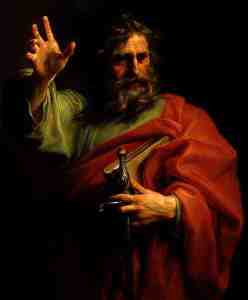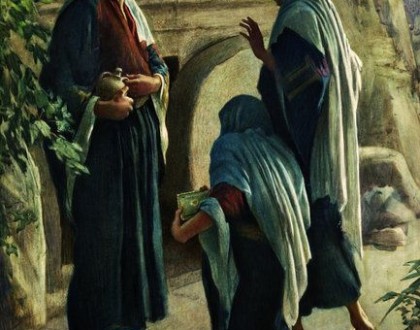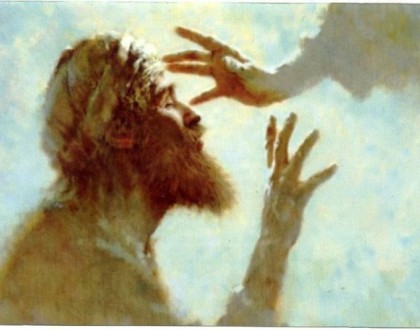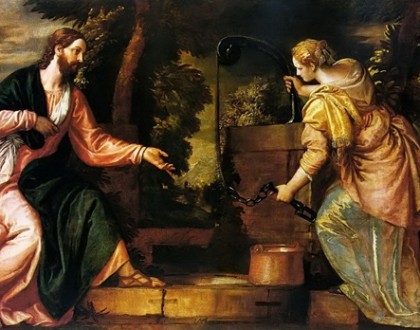2nd Sunday of Advent December 7th 2014

2nd Sunday of Advent
December 6th 2014
The 2nd Sunday of Advent is also known as “Bible Sunday” and traditionally a Sunday where Catholics are invited to rediscover the treasure of Scripture. It’s sad that so many Catholics are not in regular contact with the life-giving Word of God. Often it’s because they have never been introduced properly or just don’t “get” the Bible.
So in the next few paragraphs we will try and give a quick introduction to the Bible and a glimpse of the “big picture” of the greatest story ever told
Word of God as an essential spiritual food
We celebrate scripture in the liturgy and should also be a daily food.
“Ignorance of scripture is ignorance of Christ” Saint Jerome
I have heard it said; “I don’t know what the bible says, I’m a catholic” That’s like saying; “I don’t know the Lord, I’m catholic”.
Scripture is meant to be lived on a daily basis.
The Canon
The bible is made up of 73 books.
Our Protestant brothers and sisters have 66, they took 6 or 7 books out a few hundred years ago.
We maintain the canon that has been there since the year 393 and 397, the councils of Hippo and Carthage. When the Catholic Church came together and under the leadership of the Holy Spirit, they determined which books would make up the canon. There are 2 sections, the Old and New Testament.
Scripture and Tradition
As Catholics we are not people of the “Book” we are people of the “Word”, the Living Word of God. The word of God has come to us in 2 primary ways, the written word, and also the oral tradition, the tradition that was handed on from the lips of Jesus to the disciples, to their apostles, to their apostles guided by the Holy Spirit.
We have both Scripture and Tradition. We stand in that great river of tradition when we speak of the word of God. The tradition, protects upholds and teaches. What makes this book so different is that it is inspired.
The word inspiration comes from the word, “theonoustos”, which means “God” “breathed”.
The Church uses a particular way to describe the word inspiration…the Holy Spirit is the principal author. Even though God used humans to be moved by the Holy Spirit, to write down human words, and only those words that the Holy Spirit wanted for the sake of your salvation.
The CCC as example and model of the Tradition at the service of Scripture
The Church has a great tradition with the Catechism. Typically about 30 years after a council one comes out. The catechism formula throughout Church history has stayed the same. It takes all that we believe as Catholics, and organizes it into 4 wonderful convenient compartments. 4 pillars so to speak, of the faith.
The 1st pillar in the CCC is the creed, the largest section.
The 2nd pillar is the sacraments and the liturgy.
The 3rd is the moral law, the 10 commandments.
The 4th pillar is prayer.
There is wisdom in the order. The creed was the original rule of faith that the Church used to read scripture to keep them on track. Saint Augustine says that all of Salvation History, from Genesis to Revelation, is in a tightly wound form in the creed. So it’s like taking the whole story and shrinking it. This is what we believe, and in the early Church this is what became the rule of faith, it was the lens in which you would read the scripture through.
Finding the “Story”
There are some real challenges when we start to read the bible. We expect to open Genesis 1… and read all the way to the book of Revelation and say… “That was a great story”. But it doesn’t happen that way, why? Because the bible is written differently than “Gone With The Wind”!
It has 73 books and is organized by different types of literature.
There is poetic literature, prophetic literature, historical literature, apocalyptic, the Gospels…. There are a huge variety of styles and this has to be taken into account when interpreting.
Our teens today have lost the narrative thread of their life. They don’t know where they came from, they don’t know who they are and they don’t know where they are going. So what happens… you go in search, often in the wrong places or you despair.
A lot of people despair when reading the bible when they can’t keep the story in front of them.
The goal is to be able to read scripture like a story. The “Titanic” movie was a blockbuster hit. It was like a microcosm of the world on a ship, where you have celebration, romance, crime, disaster, and heroes. Girls from 10 to 18 went as many as 10 times, why? Because they like boats? No because they are in search of a story. That has a hero, sacrifice, romance, challenge… and they are hoping that it will happen to them.
Getting the “Big Picture”
We have to start with the big picture, that’s education. Reduce 73 books to 12 periods of salvation history that can be easily understood and memorized.
It’s important to identify the books that are narrative in style. There are 14 of them.
Genesis, Exodus, Numbers, Joshua, Judges, 1 and 2 Samuel, 1 and 2 Kings, Ezra, Nehemiah, 1 Maccabees, Luke and Acts.
If you read those 14 books you’ll get the story.
The other 59 books fit within the context of those 14 books.
See why we skip Levictus, because when you come to Leviticus you tend to lose the story. Everyone wants a story. Great epics, movies, people learn through stories and this is the greatest story ever told.
If you read 4 chapters a day of the 14 books, it would take you 3 months to get through those books.
It’s important that our eyes come in contact with the text. To feel it, get it, feel the rhythm of the text, the story, to get it down into your heart. You won’t understand every detail, that’s ok; you have got the rest of your life to work it out. It’s important to pace yourself.
Which Bible?
What bible should I use? People ask, what’s the best translation of the bible?
The Revised Standard Catholic Edition. That is the one I use, and there are a couple of reasons why I use that; its very accurate, its approved by the bishops, it is very readable and its used in the CCC. And the RSV is what many Protestants use. Its good to have a common ground with people when talking about scripture. Another really good translation is The Jerusalem Bible.
What is the difference between their RSV and the Catholic edition?
We have all 73 books. The regular translation has 66 with a section called the “Deutro-canonical books”.
The Bible, a life long companion
I’ve been studying the bible now for 25 years and I am realizing now that I am just scratching the surface, it is so deep.
As you study, pray. The same spirit that wrote this is the same spirit that will unlock the word for you. It’s a revelation, and a revelation needs to be revealed to us.
Recent Sermons

Easter Sunday – The Resurrection
April 14, 2017

4th Sunday of Lent Year A – The Man Born Blind
March 27, 2017

3rd Sunday of Lent Year A – The Samaritan Woman at the Well
March 20, 2017

